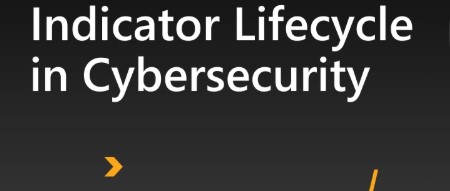🔐 What is Indicator Lifecycle in Cybersecurity? A Complete Guide
In the ever-evolving world of cybersecurity, detecting and responding to threats is more important than ever. One of the key tools in this effort is the Indicator of Compromise (IOC) — but knowing an IOC is just the beginning. To effectively manage and use these indicators, cybersecurity professionals follow what’s known as the Indicator Lifecycle.
In this post, we’ll break down:
- What indicators are in cybersecurity
- What the indicator lifecycle is
- Each stage of the lifecycle
- Why it’s crucial for cyber defense and threat intelligence
🧠 What Are Indicators in Cybersecurity?
Indicators, or more specifically Indicators of Compromise (IOCs), are pieces of forensic data that identify potentially malicious activity on a system or network.
Examples of IOCs include:
- IP addresses associated with attacks
- Malicious URLs or domains
- Hash values of malware files
- Email addresses used in phishing
- Unusual network traffic patterns
These indicators help analysts detect and respond to threats — but to be useful, they must go through a structured lifecycle.
🔄 What is the Indicator Lifecycle?
The Indicator Lifecycle is the process by which indicators are:
- Discovered
- Validated
- Shared
- Applied (in detection/prevention systems)
- Retired or updated when they are no longer valid
Just like software or intelligence, IOCs have a life — they are born, used, and eventually become outdated or irrelevant.
By managing the lifecycle properly, organizations can:
- Reduce false positives
- Stay updated on new threats
- Improve incident response
- Share intelligence with others
🔍 Stages of the Indicator Lifecycle
Here’s a detailed look at each phase of the Indicator Lifecycle:
1. Collection / Discovery
This is where IOCs are identified from different sources such as:
- Threat intelligence feeds
- Security information and event management (SIEM) systems
- Antivirus or firewall logs
- Incident reports
- Manual analysis of malware or attacks
Goal: Capture potential indicators from internal or external intelligence.
2. Validation / Analysis
Not all discovered indicators are useful. This stage involves:
- Analyzing the IOC to ensure it’s truly linked to malicious activity.
- Validating the context: Is it recent? Is it active? Is it part of a known campaign?
Goal: Confirm that the indicator is relevant and accurate.
3. Enrichment / Contextualization
Once validated, indicators are enriched with more context:
- Where was it seen?
- Who is it associated with (e.g., threat actor group)?
- What is the risk level?
Goal: Make the IOC more actionable for analysts and systems.
4. Distribution / Sharing
Sharing indicators helps other teams or organizations protect themselves. This can be done via:
- Threat intelligence platforms (TIPs)
- Industry groups (like ISACs)
- Security vendors
Goal: Disseminate the IOC to relevant stakeholders and systems (like firewalls or EDR tools).
5. Usage / Action
Indicators are deployed to detect, prevent, or hunt threats in real-time:
- Blocking an IP in a firewall
- Searching logs for a file hash
- Using rules in SIEM for alerts
Goal: Actively defend against threats using the indicators.
6. Review / Retirement
Indicators can expire or lose relevance:
- A malicious IP may become inactive
- A domain may be repurposed
- A file hash might only relate to a past campaign
These must be removed or marked obsolete to avoid false alerts or wasted resources.
Goal: Keep threat detection efficient and up to date.
🧩 Why Is the Indicator Lifecycle Important?
- ✅ Improves Threat Detection: Timely and accurate indicators increase chances of catching real threats.
- ✅ Reduces False Positives: Managing the lifecycle avoids overloading systems with outdated data.
- ✅ Supports Threat Intelligence: Lifecycle management ensures your threat data is relevant and trusted.
- ✅ Enables Collaboration: Sharing validated indicators helps the broader community stay secure.
🛡️ Final Thoughts
The Indicator Lifecycle in cybersecurity is a structured approach to managing IOCs effectively. Without proper lifecycle management, organizations risk relying on outdated or irrelevant data, which can hinder their ability to detect and respond to threats.
In today’s cyber landscape, proactive threat intelligence isn’t a luxury — it’s a necessity. By understanding and applying the Indicator Lifecycle, security teams can stay ahead of attackers and build stronger defenses.
